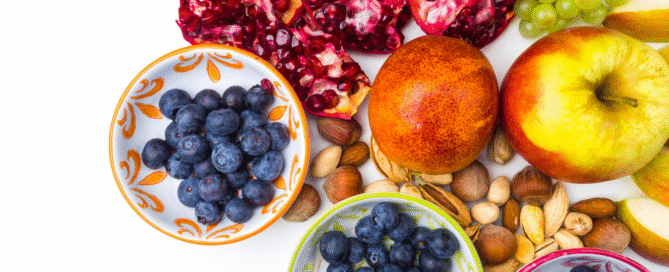How Mindful Eating Improves Digestion for Better Health and Wellness
Mindful eating is a practice that encourages individuals to pay full attention to the experience of eating. It involves noticing the taste, texture, and aroma of food while being aware of hunger and satiety cues. This approach not only enhances the eating experience but also significantly improves digestion by allowing the body to process food more efficiently.
When a person engages in mindful eating, they tend to eat more slowly and chew their food thoroughly. This practice aids in breaking down food better in the mouth, which can lead to improved digestive function in the stomach and intestines. By reducing distractions, individuals can focus on what they’re consuming, allowing for a more harmonious connection between the mind and body during meals.
Additionally, the stress-reducing aspects of mindful eating contribute to better digestion. When a person practices mindfulness, they create a calmer environment for eating, which can help regulate digestion by minimizing stress-related disruptions. Engaging fully in the meal experience can lead to a more mindful approach to nutrition, ultimately supporting overall digestive health.
Understanding Mindful Eating and Digestion
Mindful eating enhances the eating experience by promoting awareness and presence during meals. This practice can significantly influence the digestive process, often leading to improved digestion and overall health.
What Is Mindful Eating
Mindful eating refers to the practice of paying full attention to the experience of eating. This involves recognizing hunger and satiety cues, understanding food choices, and savoring each bite. Practitioners focus on the texture, flavor, and aroma of food, fostering a deeper connection with what they consume.
This approach encourages an enhanced awareness of the body’s signals, allowing individuals to make healthier food choices. By minimizing distractions during meals, such as television or smartphones, they can better appreciate the food and its effects.
The Basics of Digestion
Digestion is a complex process that occurs in multiple stages, beginning in the mouth and extending through the gastrointestinal tract. It involves the mechanical and chemical breakdown of food, allowing nutrients to be absorbed efficiently. Key organs, like the stomach and intestines, play vital roles in this process.
Saliva, digestive enzymes, and stomach acids contribute to breaking down food into smaller molecules. This allows the body to absorb essential nutrients, which are then transported via the bloodstream to cells.
How Digestion and Mindfulness Connect
Mindful eating can substantially impact digestion by fostering relaxed states during meals. When individuals practice mindfulness, their bodies enter a calmer state, enhancing digestive function. Stress reduction is vital, as high stress can hinder digestion and lead to issues such as bloating.
Being present during meals can improve nutrient absorption. When the mind is engaged in the eating experience, the body becomes more responsive to digestive processes. This aids in the smooth transition of food through the digestive system, minimizing discomfort and enhancing overall health.
How Mindful Eating Improves Digestion
Mindful eating fosters a greater connection with one’s body, enhancing the ability to recognize fullness and hunger signals. This practice reduces stress, which positively impacts digestive health, and encourages slower eating, aiding nutrient absorption. Listening to bodily cues further contributes to improved digestion and comfort.
Awareness of Fullness and Hunger Cues
Being aware of fullness and hunger cues is crucial for effective digestion. Mindful eaters can better recognize when they are hungry or satisfied, which helps prevent overeating.
Listening to the body’s signals encourages individuals to consume appropriate portion sizes. This awareness reduces incidents of bloating and discomfort, leading to a more pleasant digestive experience.
Engaging with food, rather than eating mindlessly, allows one to enjoy meals fully. This practice cultivates a healthier relationship with food, ultimately supporting better digestive health.
Reducing Stress to Support Digestive Health
Stress significantly impacts digestive function. When stress levels rise, the body enters a “fight or flight” mode, which can hinder digestion.
Practicing mindful eating involves techniques like deep breathing, promoting relaxation. A relaxed state activates the “rest and digest” response, which optimizes digestive processes.
Reducing stress also helps alleviate symptoms such as bloating and digestive discomfort. Engaging with food mindfully creates a calming atmosphere around meals, aiding overall digestive well-being.
Slowing Down to Enhance Nutrient Absorption
Eating slowly allows the body to properly process food, enhancing nutrient absorption. Mindful eaters take time to chew their food thoroughly, which is essential for digestion.
When food is chewed well, it breaks down into smaller particles, making it easier for the digestive system to absorb nutrients. This practice can lead to less digestive discomfort and an overall better experience during and after meals.
Slower eating also encourages individuals to savor flavors and textures, enhancing the overall enjoyment of food. This mindful approach contributes to healthier eating habits and improved digestive outcomes.
Listening to Your Body for Better Digestion
Listening to the body is an integral component of mindful eating. Individuals who pay attention to their body’s reactions can adjust their eating habits accordingly.
Recognizing signs of digestive discomfort or dissatisfaction with a meal can prompt changes in food choices or portion sizes. By tuning into bodily signals, one can avoid foods that may cause discomfort and promote overall digestive health.
This approach fosters a greater sense of awareness, not just during meals but across a person’s eating patterns. Adjusting based on physical hunger cues leads to a more harmonious digestive experience.
Impact on Eating Behaviours and Relationship with Food
Mindful eating significantly influences eating habits and the relationship individuals have with food. By focusing on awareness and presence during meals, one can cultivate healthier behaviors and a deeper connection with food.
Preventing Overeating and Indigestion
Mindful eating promotes awareness of hunger and satiety cues. By paying attention to physical signals, individuals can recognize when they are genuinely hungry versus eating out of habit or distraction. This awareness helps to prevent overeating, which is a common cause of indigestion.
Key strategies include:
- Chewing Slowly: This allows for better digestion and recognition of fullness.
- Portion Control: Serving smaller portions can reduce the tendency to overeat.
- Listening to the Body: Recognizing when the body signals satisfaction can prevent excess intake.
By developing these habits, individuals can improve their digestive health significantly.
Building a Positive Relationship with Food
A mindful approach can foster a positive relationship with food. This involves seeing food not just as sustenance, but as an integral part of experiences and traditions.
Strategies to enhance this relationship include:
- Practicing Gratitude: Acknowledging the source of food can create a deeper appreciation.
- Exploring Varieties: Trying new foods can enhance enjoyment and reduce restrictive eating patterns.
- Avoiding Labels: Disassociating morality from food choices can minimize guilt associated with eating certain foods.
Through these practices, individuals can shift their perspective towards a healthier, more respectful connection with food.
Addressing Emotional and Binge Eating
Mindful eating can also play a crucial role in addressing emotional and binge eating behaviors. Individuals often turn to food for emotional comfort during stressful times, leading to cycles of binge eating.
Approaches to manage this include:
- Identifying Triggers: Noting what emotions lead to eating can help individuals find alternative coping strategies.
- Mindful Reflection: Taking moments to pause before eating can prevent impulsive decisions driven by emotions.
- Developing Alternatives: Engaging in activities like walking or journaling can provide non-food outlets for emotional stress.
These techniques can assist in mitigating emotional eating, leading to more balanced and healthier eating behaviors.
Long-Term Benefits of Mindful Eating Practices
Mindful eating fosters a deeper connection with food, encouraging healthier habits and decisions. The practice can lead to sustainable weight management, better food choices, and enhanced overall well-being.
Sustainable Weight Management
Practicing mindful eating can significantly contribute to sustainable weight management. By focusing on hunger cues and satiety signals, individuals are less likely to overeat. This awareness enables them to choose portion sizes that align with their actual needs.
Additionally, mindful eaters often gravitate towards nutrient-dense foods rather than high-calorie, low-nutrition options. This shift in focus supports weight loss and helps maintain a healthy weight over the long term.
Understanding the body’s true hunger signals can prevent emotional eating, reducing reliance on food for comfort. This mindfulness promotes a balanced relationship with food.
Improved Food Choices and Enjoyment
Mindful eating enhances the enjoyment of food, as individuals concentrate on flavors, textures, and aromas. When meals are appreciated, they often make healthier choices, opting for whole grains, lean proteins, and fresh fruits and vegetables.
Being present during meals allows for recognizing satisfaction from food, which can lessen the desire for unhealthy snacks. Mindful eaters often explore new recipes and cooking methods, increasing variety in their diets.
This exploration encourages a balanced intake of carbohydrates, proteins, and essential nutrients, which benefits overall health.
Moreover, the satisfaction derived from truly enjoying meals leads to lower chances of binge eating or reliance on processed foods.
Supporting Overall Well-Being
Mindful eating contributes positively to mental and emotional health. By fostering a sense of gratitude and respect for food, individuals enhance their relationship with meals. This practice can lead to reduced levels of stress related to eating.
Additionally, mindfulness can improve digestion. Eating slowly helps in better food breakdown, allowing for efficient nutrient absorption. It can also alleviate digestive issues by preventing overeating and promoting mindful chewing.
Empowerment gained through mindful eating practices fosters a more intuitive approach to health, motivating individuals to prioritize well-being. This holistic impact supports not just physiological health, but emotional resilience as well.








